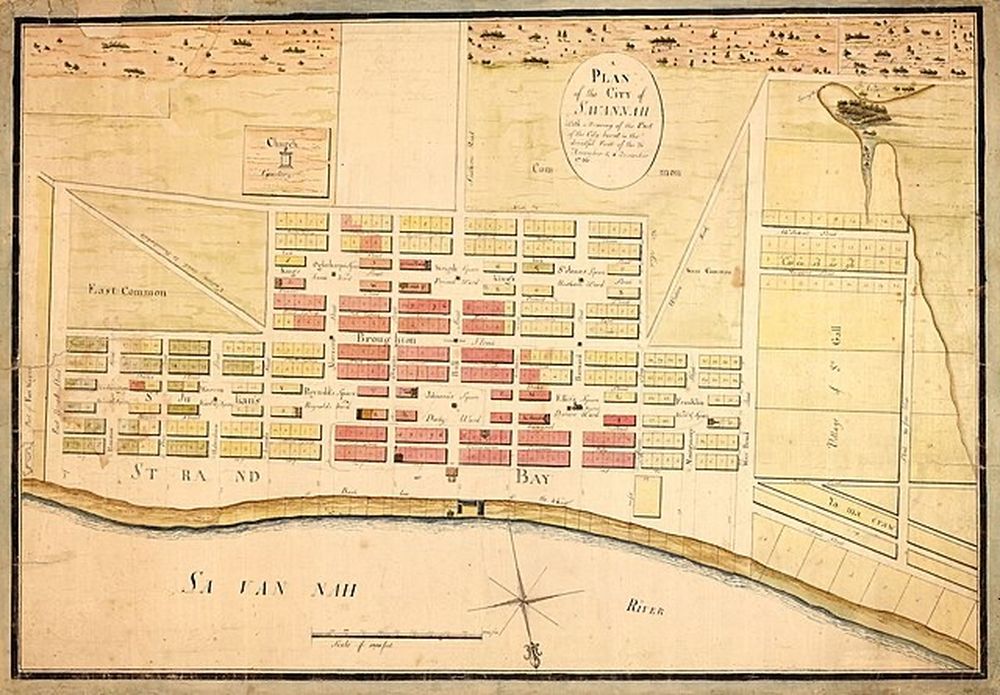Savannah’s Story – A Living History
Words: Bryan Donbavand
Images: Kelly Calvillo

Savannah is a city where the past doesn’t sit quietly in the background.
It’s present in the way the streets are laid out, in the shade of the oak trees, and in the rhythm of the squares that hold so much of the city’s character. To understand Savannah is to step into a place where history feels lived-in, not distant.
Beginnings on the Bluff
The city’s story begins in 1733, when General James Oglethorpe arrived from England with 120 settlers and established the colony of Georgia on Yamacraw Bluff. Working alongside Yamacraw Chief Tomochichi and interpreter Mary Musgrove, Oglethorpe laid the foundations of a settlement that would grow into one of the South’s most important ports.
Oglethorpe’s plan for the city was bold and ahead of its time. Instead of haphazard growth, Savannah was built on a grid of streets anchored by public squares. That design—orderly, green, and open—remains one of the city’s defining features today. Read more at Georgia Historical Society.

The Architecture of a City
Savannah’s architecture tells a story of its own. Federal-style homes, Gothic Revival churches, Italianate townhouses, and grand antebellum mansions sit alongside modest cottages and commercial buildings. Each reflects a chapter in the city’s growth—from colonial beginnings through the cotton boom and into the 20th century.
One of the best ways to see this is simply to walk. A turn down Jones Street might lead to some of the city’s most admired townhouses, while a stroll along Bull Street brings you through squares framed by landmarks like the Cathedral Basilica of St. John the Baptist. For visitors, this layered architecture is not a museum—it’s daily life. Learn more at Visit Savannah.
Civil War and Survival
During the Civil War, Savannah was spared the destruction that fell on many Southern cities. In December 1864, General William Sherman arrived at the city’s gates after his March to the Sea. Instead of burning Savannah, he sent a telegram to President Abraham Lincoln offering it as a Christmas gift: “I beg to present you as a Christmas gift the city of Savannah.”
This act of preservation allowed much of the city’s architecture to endure, leaving a physical record of its history intact. Walking the Historic District today is to walk streets that have looked much the same for more than 150 years.

A City of Squares
Of Oglethorpe’s original plan, 22 squares remain—small parks scattered across the Historic District, each with its own personality. Chippewa Square, where the famous “Forrest Gump” bench scene was filmed, sits just a few blocks from Monterey Square, home to the Mercer-Williams House of Midnight in the Garden of Good and Evil fame.
The squares are more than landmarks; they’re part of Savannah’s daily rhythm. Locals sit under the oaks, artists paint, and visitors pause to take in the layers of history that play out in the shade. Discover Savannah’s squares at the City of Savannah’s official site.
Layers of Culture
Savannah’s story is not only about architecture and battlefields—it’s also about people and culture. The city is home to one of the oldest African American Baptist congregations in the United States, and the legacy of the Gullah Geechee culture remains strong in the region. Local food, music, and storytelling all carry these traditions forward. Explore more through the Ralph Mark Gilbert Civil Rights Museum.

A History That’s Still Alive
What sets Savannah apart is how much of its history is still in use. The Historic District is the largest National Historic Landmark District in the United States, but it’s not static. Homes are lived in, churches are active, shops and galleries fill the old warehouses along River Street. The result is a city that doesn’t feel preserved so much as ongoing.
That balance—between honoring the past and living in the present—is part of what makes Savannah so compelling. It’s why the city continues to draw visitors back again and again.
The Municipal Grand was created to be part of this story. As one of the newest boutique hotels in the Historic District, it carries the past of its own building while opening itself to the city’s future. If you’re planning a visit, we invite you to make The Municipal Grand your home base as you experience Savannah’s history in real time.
